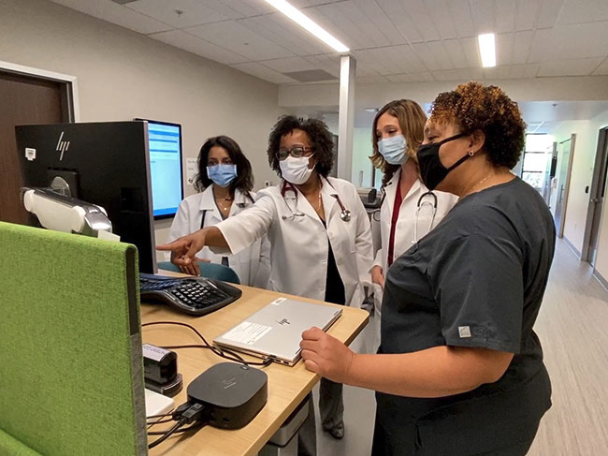
As the United States continues to address immediate public health and safety needs caused by the COVID-19 pandemic, Kaiser Permanente is also looking to the future and modeling the way to a health care system that is sustainable and could meet the needs of many more people in our country.
The COVID-19 pandemic has exposed many weaknesses in our medical care system and public health infrastructure. It has also highlighted that it is time to turn the page on the flawed concept of fee-for-service reimbursement and instead embrace new models of payment and organization to create a more resilient and responsive health care system that better balances health care and public health.
Kaiser Permanente’s integrated model of health care financing and care delivery is a proven alternative to the predominant care-and-financing model in the United States. It offers a roadmap to addressing access and affordability, with a focus on improving outcomes. By committing to providing excellent individual care and understanding the needs of the broader population, we take a longer view, provide more stability, and are better equipped to support population health. More of the U.S. health care system needs to move in this direction.
Building on coverage and access
Positive change can begin by building on the current system and providing everyone in the United States with guaranteed access to truly affordable, high-quality health care and coverage. While the uninsured rate has dropped nationally since the Affordable Care Act took effect, there have been upticks in the number of uninsured Americans in the last 3 years. At the same time, the pandemic revealed a strength in the ACA’s design that enabled transitions among different sources of coverage as individuals and families were affected by changed economic conditions.
We should seize this chance to foster stability for the millions who gained comprehensive coverage over the past decade and focus on the gaps that remain. The changes included in the American Rescue Plan Act are a step in the right direction. Additional subsidies to help consumers affected by economic crises will mean that they can afford to stay on their current plan, maintain their employer coverage through COBRA, or choose a marketplace option that is right for them. Financial assistance like this, as well as incentives for all states to expand Medicaid coverage, will reduce uninsured rates across the board without disrupting the quality of care-and-coverage choices people currently have. Our next step should be to make the enhanced marketplace subsidies in the American Rescue Plan Act permanent.
Investing in total health
Every day we see how the pandemic is affecting the physical and mental health of our colleagues and members. As we look to the future, we must ensure not only that individuals have health care coverage but also that they can access care and focus on their total health and well-being. The pandemic has clarified our need to produce better and more equitable health care outcomes beyond the delivery of medical services alone. This means investing in public health, community health, and mental health — so everyone can live healthier lives.
As we address the immediate needs of the pandemic, we have a tremendous opportunity to improve the health care system long-term. The longstanding research and policy support the pharmaceutical sector typically receives from the government was apparent in the rapid development and deployment of COVID-19 vaccines, and we have seen what is possible when the public and private sectors openly coordinate toward common goals. It is imperative that we bring the same focus and determination that we’ve brought to the fight against COVID-19 to our efforts to improve total health. Public policy that promotes value over volume, leverages data-driven decision making, and encourages care coordination would help individuals navigate their care options and prioritize preventive measures to find and treat problems early. This would enable us to significantly reduce costs and improve quality within the U.S. health care system.
Making care more affordable
The entire health care system must focus on making care and coverage affordable. This cannot be done by placing arbitrary caps on insurance premiums or regulating provider pricing in a manner that disregards the reality of underlying cost drivers. That approach risks disrupting access to care if doctors and hospitals can’t afford to participate because they would be paid less than the actual cost of delivering care. We must do the hard work of examining and understanding the components of health care spending. The ever-increasing cost of prescription drugs gets a lot of focus, but it is not the only problem. The vast and yet too often poorly distributed infrastructure of the hospital and medical sectors is inefficient and not patient-centric enough. And our archaic approaches to educating and training the people who make up our health care system are not keeping up with the population’s needs. We need creative policies in all of these areas to ensure the cost of care is sustainable and affordable for everyone in this country.
It will be a terrible missed opportunity if we do not thoughtfully apply what we have learned in the past year to our long-standing health system problems. By being more creative in promoting an affordable, high-quality health care system, we can leave more than just the pandemic behind us in the years ahead — we can drive forward with a health system that works for everyone.
